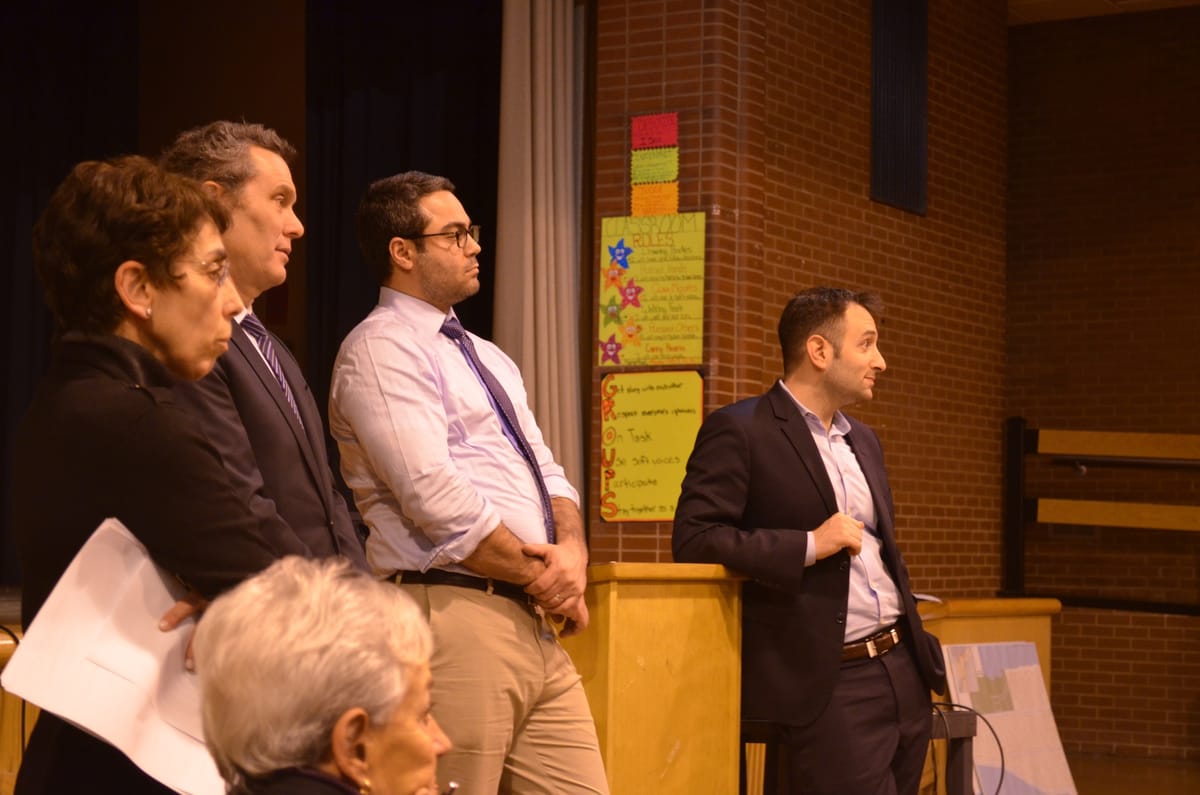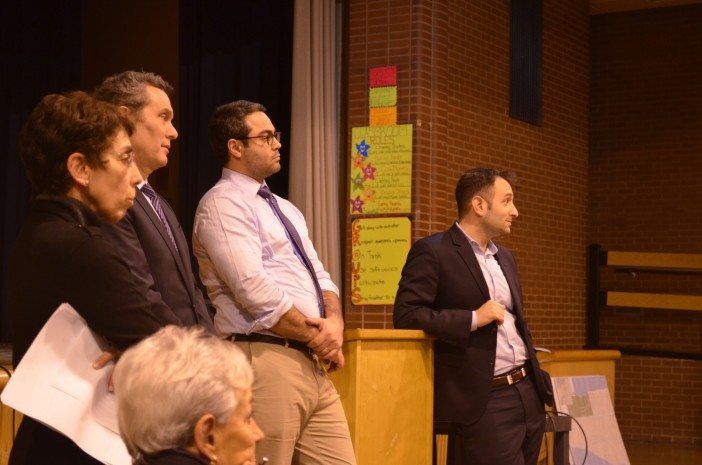Frustrated Neighbors Find Few Answers About Projects To Protect Waterfronts From Flooding


Frustrations boiled over at a Manhattan Beach Community Group meeting Tuesday when city officials showed up empty handed in front of residents demanding solutions that would protect their communities from coastal flooding.
“Why is there no solution yet? Isn’t that your job to come and propose a solution?” one man shouted. “The water is rising. People are saying their homes are flooding. It’s been three years after Sandy. So what are you guys waiting for?”
Representatives from the Department of Environmental Protection and the Mayor’s Office of Recovery and Resiliency listened wide-eyed as residents inundated them with questions about why their communities are still vulnerable three years after Superstorm Sandy. The issue took on greater urgency this month when creeks appeared in the streets after a high tide overwhelmed sewers and sent water gushing out of the storm drains.
The representatives had few answers to assuage neighbors’ concerns.
“There’s not a solution today that we can implement. It needs to be studied,” said DEP Deputy Commissioner Eric Landau. “Obviously, some of our infrastructure is very old. The short answer is: Yes, it’s something that over the course of the next year or so we are going to be looking at.”
That answer infuriated some at the meeting — who pointed out that millions of dollars from the federal government had been set aside for resiliency projects in their communities after Superstorm Sandy.
“You’re telling me your going to look at this in a year? I’m telling you that we’re going to have a major flood within a year,” said Manhattan Beach resident Rina Dweck.
Audience members repeatedly asked about a project to install sewer cut-off valves to prevent backups during floods. Governor Andrew Cuomo’s NY Rising initiative dedicated more than $9 million to have the valves installed in homes and sewers throughout southern Brooklyn, but community leaders say they haven’t seen a dime of that money.
“I told these guys they would be put through the ringer tonight,” said Manhattan Beach Community Group President Judy Baron. “The grey hair was here before but it’s whiter now. The bottom line is that we have seen zippo from these projects.”
Landau did offer details about a plan to install 7,000 bioswales (small patches of vegetation and soil that soak up floodwaters) throughout the city. But that project is not likely to be completed for seven to eight years, he said. Landau also recommended neighbors reach out to elected officials to identify clogged catch basins so that rainwater is better able to drain from the streets.
News that more government projects are in the offing exasperated many who felt like they have been handed empty promises for too many years.
“What do we have to do in order to get some kind of response from the government? You keep studying these things for years and years and years. But nothing gets done here,” said Rubin Margelis.
City Councilman Chaim Deutsch, who has joined other Brooklyn representatives in calling on the Army Corps of Engineers to study coastal protection plans for southern Brooklyn’s waterfront communities, summed up the feelings of many residents who live in the flood zones.
“Unfortunately, we live in fear every time there’s a storm. We look out our windows to see what’s coming,” he said. “There need to be solutions.”



